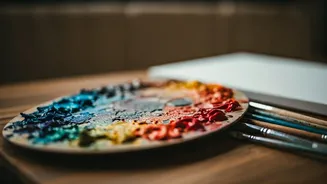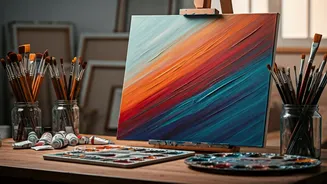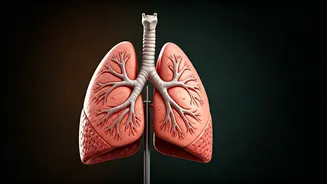Sonakshi's Emotional Outlet
Sonakshi Sinha once revealed the profound impact painting had on her well-being, particularly in helping her navigate periods of sadness. She described
how immersing herself in art provided a sense of calm and became a way to manage difficult emotions. In essence, art served as a therapeutic escape, allowing her mind to quiet and find peace. Painting offered a channel for self-expression, fostering an environment where she could process her feelings and experience a sense of tranquility. Through this artistic pursuit, Sonakshi discovered a personal sanctuary, highlighting the power of creative endeavors as a means of emotional healing.
Understanding Art Therapy
Art therapy is a therapeutic approach that harnesses the creative process of art-making to improve an individual's mental and emotional well-being. It is employed by trained art therapists who use various art mediums, such as painting, drawing, and sculpting, to help clients explore their feelings, resolve conflicts, develop self-awareness, manage behavior, and reduce stress. This type of therapy is not about creating aesthetically pleasing art; rather, it focuses on the process of artistic expression as a means of communication and self-discovery. Art therapy is adaptable and can be used with people of all ages and backgrounds, whether they have prior art experience or not.
Stress Reduction through Art
Art therapy provides a powerful method for reducing stress by offering a non-verbal outlet for emotions and thoughts. Engaging in creative activities can activate the parasympathetic nervous system, responsible for the 'rest and digest' response, thus counteracting the body's stress response. The act of creating art requires focus, which can act as a distraction from worries, promoting a state of mindfulness. Furthermore, the tangible nature of art allows individuals to externalize their feelings, gaining a sense of control and reducing feelings of overwhelm. The process of art-making itself can be a meditative experience, leading to feelings of calmness and relaxation, which are all beneficial for stress reduction.
The Calming Mind Effect
The practice of painting, as experienced by Sonakshi Sinha, demonstrates a remarkable ability to calm the mind. When engaged in art, individuals often experience a state of 'flow,' where they become completely absorbed in the activity, losing track of time and worries. This state of focus and presence can help quiet the mental chatter, promoting a sense of peace and reducing anxiety. Painting provides a sensory experience that can be deeply calming, allowing individuals to connect with their emotions and express them in a safe and non-judgmental way. The act of creation itself offers a sense of accomplishment and control, further contributing to a feeling of calm and mental well-being.












